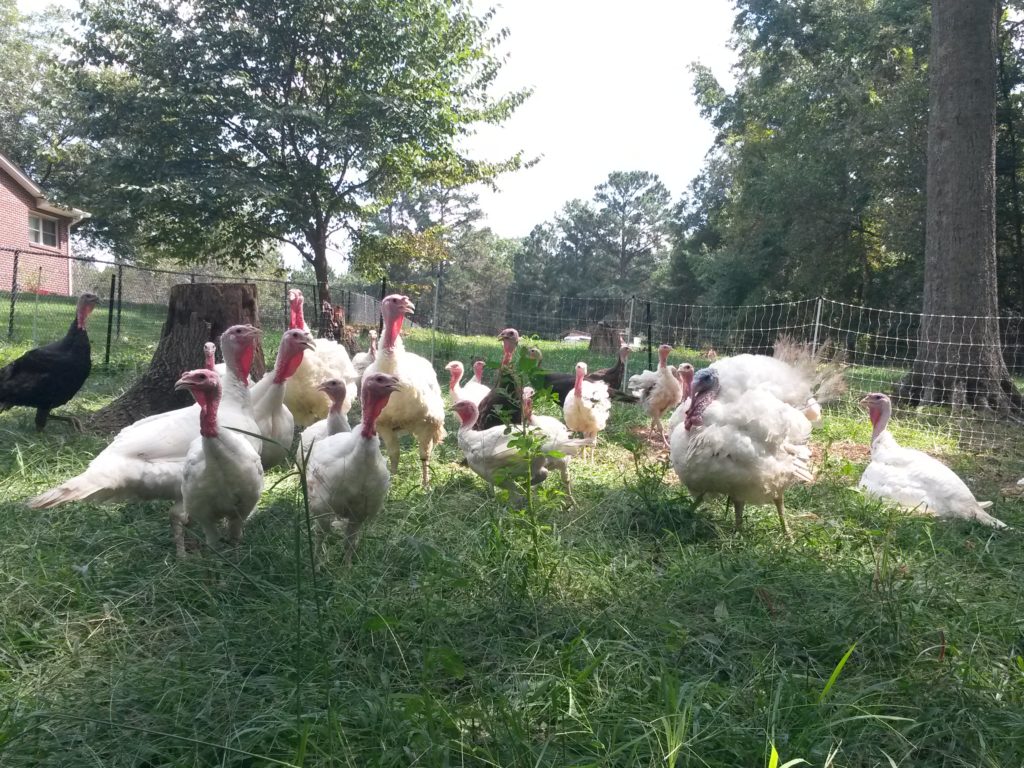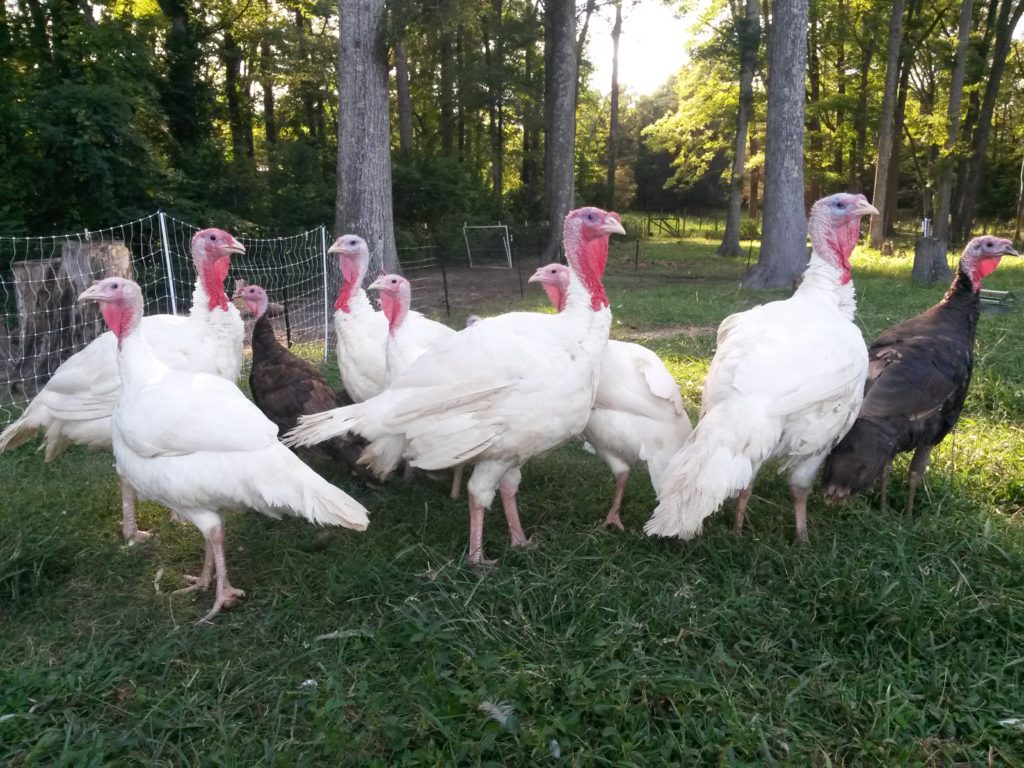***Due to inflation and the ongoing effects of rapidly rising feed, fuel, and equipment costs our poultry production has been indefinitely suspended***
 Our turkeys are raised on pasture, enabling them to consume copious amounts of green grass and bugs.
Our turkeys are raised on pasture, enabling them to consume copious amounts of green grass and bugs.
While chickens will eat up to 20% of their diet in grass, turkeys are much more keen on foraging, eating up to 50% grass. They are fed a locally-grown, non-GMO grain ration to supplement their pasture. We never give our turkeys any antibiotics or other drugs. The high amount of green forage in their diet results in high levels of beta carotenes and Omega-3s in the final product.
Our turkeys are raised seasonally and are available each fall.
We raised both Broad Breasted and Heritage turkey varieties. See below for information on the differences between these varieties:
Broad Breasted White Turkey

Broad Breasted White (BBW) turkeys are the most commonly raised variety of commercial turkeys. They have been bred to have extremely efficient metabolism and grow rapidly much like the Cornish-Rock broiler chicken. The cost of this efficiency is that their massive chests prevent these turkeys from being able to fly or reproduce naturally. This turkey will have the very large amounts of white meat normally associated with conventional turkey.
Because of their fast growth, the BBW will often develop leg and dietary problems in factory farms. We will be raising these turkeys on pasture (supplemented with non-GMO turkey feed), moving them frequently to fresh grass for optimum health and exercise. This will eliminate the vast majority of issues dealt with on factory farms.
BBW turkeys are market weight at 16 weeks and will reach 14-25 lbs.
Heritage Turkey

Heritage turkeys are endangered varieties very similar to the birds the Pilgrims would have eaten. They have proportionally smaller breasts, darker leg meat, are more flavorful than Broad Breasted (BB) turkeys, and usually outperform BB turkeys in blind taste tests. Heritage turkeys grow slower than BB turkeys, which results in a higher foraging rate and sturdier meat. The darker leg meat is a result of heritage birds’ much higher activity than BB turkeys.
Because of their slower growth rate, heritage turkeys consume more feed overall than BB turkeys to produce the same amount of meat. A few of the benefits of the slower growth time is an increased total amount of greens consumed and a higher amount of omega-3 fatty acids.
Heritage turkeys are market weight at 28 weeks and will reach 8-20 lbs.